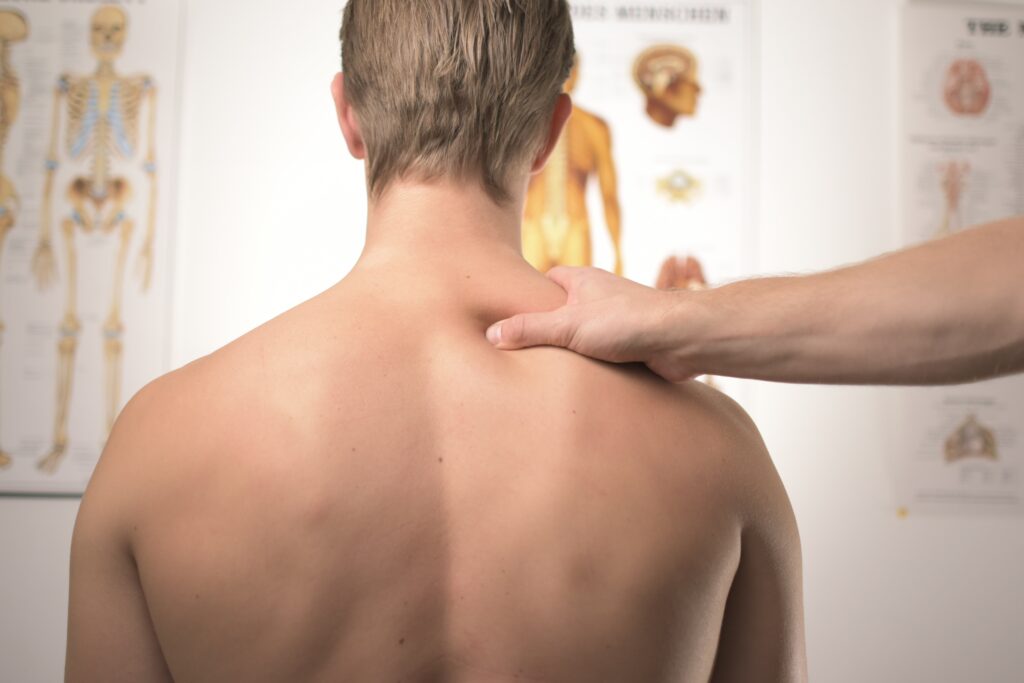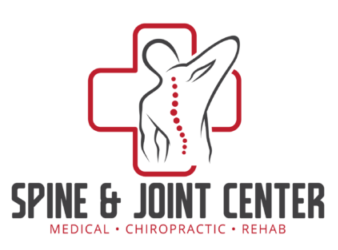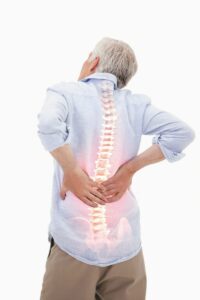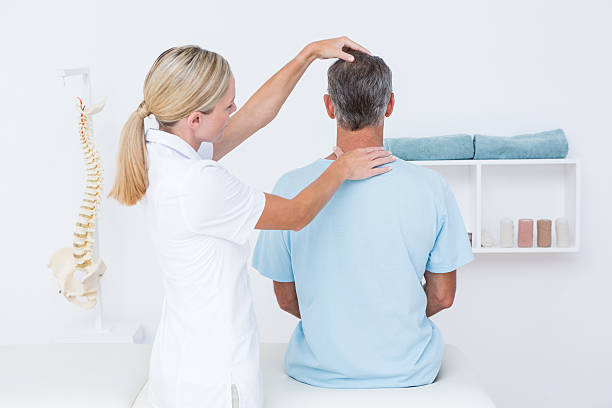Whiplash
How are you dealing with pain?
If you’re dealing with pain from minor injuries, accidents, or an ongoing affliction, we have the pain relief treatments you need. Our doctor will provide you with immediate pain relief for your symptoms but also ensure the results last. We’ve been helping those in the Tampa bay area heal and recover from injuries, and we’re ready to help you get back to a healthy and active lifestyle too.
Whiplash
Are you suffering from whiplash? Whiplash requires immediate attention by our qualified chiropractors. The term “whiplash” was first used in 1928 to define an injury mechanism of sudden hyperextension followed by an immediate hyperflexion of the neck that results in damage to the muscles, ligaments and tendons—especially those that support the head. Today, we know that whiplash injuries normally do not result from hyperextension or hyperflexion (extension and flexion beyond normal physiological limits), but rather an extremely rapid extension and flexion that causes injuries. Whiplash accidents are not limited to car accidents alone, roller coasters can cause whiplash accidents too.
Once one of our chiropractors at Tarpon Spine And Joint have confirmed your injury, don’t forget to file an insurance claim right away. Due to their complex nature and profound impact on people’s lives, few topics in health care generate as much controversy as whiplash injuries. Unlike a broken bone where a simple x-ray can validate the presence of the fracture and standards of care can direct a healthcare professional as to the best way in which to provide pain relief and handle the injury, whiplash injuries involve an unpredictable combination of nervous system, muscles joints and connective tissue disruption that is not simple to diagnose and can be even more of a challenge to treat. In order to help you understand the nature of whiplash injuries and how they should be treated, it is necessary to spend a bit of time discussing the mechanics of how whiplash injuries occur.

The Four Phases Of A Whiplash Injury
During a rear-end automobile collision, your body goes through an extremely rapid and intense acceleration and deceleration. In fact, all four phases of a whiplash injury occur in less than one-half of a second! At each phase, there is a different force acting on the body that contributes to the injury as a whole, and with such a sudden and forceful movement, damage to the vertebrae, nerves, discs, muscles, and ligaments of your neck and spine can be substantial.
Phase 1
During this first phase, your car begins to be pushed out from under you, causing your mid-back to be flattened against the back of your seat. This results in an upward force in your cervical spine, compressing your discs and joints. As your seat back begins to accelerate your torso forward, your head moves backward, creating a shearing force in your neck. If your head restraint is properly adjusted, the distance your head travels backward is limited. However, most of the damage to the spine will occur before your head reaches your head restraint. Studies have shown that head restraints only reduce the risk of injury by 11-20%.
Phase 2
During phase two, your torso has reached peak acceleration—1.5 to 2 times that of your vehicle itself—but your head has not yet begun to accelerate forward and continues to move rearward. An abnormal S-curve develops in your cervical spine as your seat back recoils forward, much like a springboard, adding to the forward acceleration of the torso. Unfortunately, this forward seat back recoil occurs while your head is still moving backwards, resulting in a shearing force in the neck that is one of the more damaging aspects of a whiplash injury. Many of the bone, joint, nerve, disc and TMJ injuries that I see clinically occur during this phase.
Phase 3
During the third phase, your torso is now descending back down in your seat and your head and neck are at their peak forward acceleration. At the same time, your car is slowing down. If you released the pressure on your brake pedal during the first phases of the collision, it will likely be reapplied during this phase. Reapplied motion of the brakes causes your car to slow down even quicker and increases the severity of the flexion injury of your neck. As you move forward in your seat, any slack in your seat belt and shoulder harness is taken up.
Phase 4
This is probably the most damaging phase of the whiplash phenomenon. In this fourth phase, your torso is stopped by your seat belt and shoulder restraint and your head is free to move forward unimpeded. This results in a violent forward-bending motion of your neck, straining the muscles and ligaments, tearing fibers in the spinal discs, and forcing vertebrae out of their normal position. Your spinal cord and nerve roots get stretched and irritated, and your brain can strike the inside of your skull causing a mild to moderate brain injury. If you are not properly restrained by your seat harness, you may suffer a concussion, or more severe brain injury, from striking the steering wheel or windshield.
Whiplash injuries can manifest in a wide variety of ways.
Every whiplash trauma is different due to many factors of the accident and quality of health. It is impossible to predict the pattern of symptoms that each person will suffer. Whiplash symptoms commonly have a delayed onset, often taking weeks or months to show up.
Injuries Resulting from Whiplash Trauma
Neck Pain – Neck pain is the single most common complaint in whiplash trauma, being reported by over 90% of patients. Often this pain radiates across the shoulders, up into the head, and down between the shoulder blades. Whiplash injuries tend to affect all of the tissues in the neck, including the facet joints and discs between the vertebrae, as well as all of the muscles, ligaments and nerves.
TMJ Problems
Brain Injury
Dizziness
Low Back Pain
With proper care, many mild whiplash injuries heal within six to nine months. However, more than 20% of those who suffer from whiplash injuries continue to suffer from pain, weakness or restricted movement two years after their accident. Unfortunately, most of these people will continue to suffer from some level of disability or pain for many years after that, if not for the rest of their lives.
Whiplash is an exceptional condition that requires the expertise of a skilled health professional specially trained to work with these types of injuries. The most effective treatment for whiplash injuries is a combination of chiropractic care, rehabilitation of the soft tissues and taking care of yourself at home.
Chiropractic care
Chiropractic care utilizes manual manipulation of the spine to restore the normal movement and position of the spinal vertebrae. It is by far the single-most effective treatment for minimizing the long-term impact of whiplash injuries, especially when coupled with massage therapy, trigger point therapy, exercise rehabilitation and other soft tissue rehabilitation modalities.
Call us to make an appointment
Please contact us directly with any questions, comments, or scheduling inquiries you may have.
- (727) 934-7246
- (727) 934-7245
-
29 N Pinellas Ave
Tarpon Springs, FL 34689
Have Questions?
Feel free to send over any questions to ease your mind of choosing our services. We are always interested in what our patients want to hear. At Spine & Joint Center our customers service is a top priority.
Spine & Joint Center
29 N Pinellas Ave
Tarpon Springs, FL 34689
Tel: (727) 934-7246
Fax: (727) 934-7245
Office Hours
We would be honored to have you stop by and come see for yourself why others have been raving about our service and accomplishments.
Monday: 9:00am – 6:00pm
Tuesday: 2:00pm – 6:00pm
Wednesday: 9:00am – 6:00pm
Thursday: 2:00pm – 6:00pm
Friday: 9:00am – 12:00pm
Saturday – Sunday: Closed
Lets Connect
We love to hear our customers success stories and to keep in touch with anyone that we have helped over the years. Give our socials a follow to see what we working on and keep an eye out for any specials and events going on in the local area.
© 2019 Spine & Joint Center / All Rights Reserved


